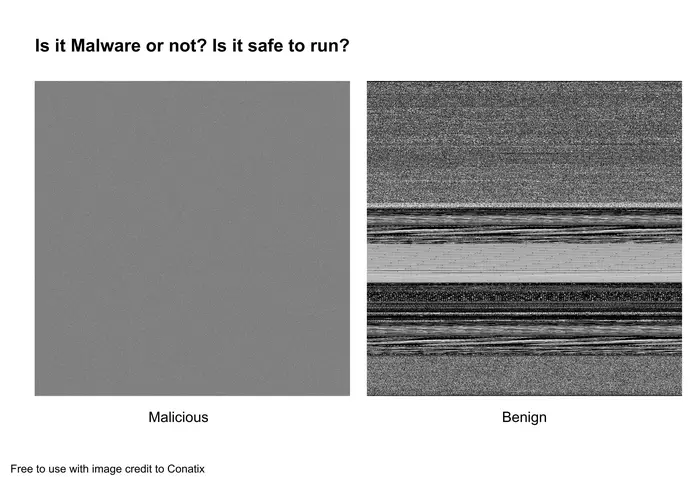Spending Time in Nature Eases Chronic Back Pain, Study Finds
Spending time amidst natural environments offers a promising avenue for individuals enduring chronic lower back pain to find relief and improve overall well-being, according to groundbreaking new research published in The Journal of Pain. This pioneering study delves into the subjective experiences of people managing long-term lower back discomfort, illuminating how access to nature can […]


Spending time amidst natural environments offers a promising avenue for individuals enduring chronic lower back pain to find relief and improve overall well-being, according to groundbreaking new research published in The Journal of Pain. This pioneering study delves into the subjective experiences of people managing long-term lower back discomfort, illuminating how access to nature can act as a therapeutic adjunct to conventional pain management strategies. The interdisciplinary team of researchers from the University of Plymouth and University of Exeter approached this exploration through in-depth interviews with participants who have suffered from chronic pain for periods extending up to nearly four decades.
This investigation marks the first qualitative study focusing directly on the nuanced role that natural settings play within the coping mechanisms employed by people with chronic low back pain. Unlike previous quantitative assessments emphasizing physiological or pharmacological interventions, the current research foregrounds individual narratives to capture the psychosocial and sensory benefits that accrue from being in natural environments. The participants, totaling ten in number, described an enhanced capacity to engage in social interactions during their outdoor excursions—a stark contrast to their often isolated indoor lifestyles prompted by pain-induced limitations.
A salient theme emerging from the study is the multifaceted nature of escapism that nature facilitates. The ability to mentally detach from persistent pain symptoms through environmental immersion fosters a distraction paradigm, softening the psychological burden that chronic pain exerts. Moreover, the tranquility offered by natural stimuli—such as fresh air, the gentle soundscape of flowing water, and verdant visual panoramas—elicits a state of calmness and reduces stress markers commonly exacerbated by ongoing pain conditions. Such sensory experiences appear to modulate affective states in ways that pharmacological therapies alone seldom achieve.
.adsslot_UWju1yK4Dz{ width:728px !important; height:90px !important; }
@media (max-width:1199px) { .adsslot_UWju1yK4Dz{ width:468px !important; height:60px !important; } }
@media (max-width:767px) { .adsslot_UWju1yK4Dz{ width:320px !important; height:50px !important; } }
ADVERTISEMENT
Physical activity in nature was another domain of significant benefit expressed by participants. The preference for outdoor exercise over conventional gym environments was linked to both motivational and biomechanical considerations. Open-air settings provided varied terrain and scenery that enhanced engagement and adherence to movement routines critical for managing musculoskeletal conditions. However, the research also underscores inherent challenges, notably the variability of accessibility across natural sites. Uneven ground, steep inclines, and the scarcity of resting points like benches present tangible barriers that can diminish participation rates among those with limited mobility or heightened pain sensitivity.
The study’s detailed findings have led researchers to advocate for a recalibration of how clinicians and policymakers integrate natural environments within holistic pain treatment frameworks. The recommendations stress the importance of designing and modifying outdoor spaces to incorporate universal accessibility features tailored to chronic pain sufferers’ needs. These might include smooth pathways, strategically positioned seating, and clear signage to encourage safe and sustained engagement with natural surroundings. By fostering inclusivity, such adaptations hold promise for amplifying the therapeutic reach of green and blue spaces.
Looking forward, the team is actively exploring the potential of immersive technologies such as virtual reality (VR) to simulate natural environments for individuals unable to physically access them. VR may offer a novel conduit for delivering the psychological and sensory benefits of nature exposure, bypassing geographical or mobility constraints. This approach aligns with burgeoning interest in digital therapeutics as complementary modalities in chronic pain management, where sensory distraction and mood enhancement can significantly attenuate perceived pain intensity.
Alexander Smith, PhD candidate and lead author, eloquently emphasizes the dual physical and mental benefits that natural environments confer upon individuals rapidly fatigued and often socially marginalized by chronic lower back pain. Smith highlights that relatively modest infrastructural improvements, alongside technological integration, could democratize access to these benefits, fostering equitable health outcomes. The authors’ insights dovetail with broader movements towards biopsychosocial models of pain—recognizing that treatment extends beyond pharmacological intervention to encompass environmental and psychosocial dimensions.
Dr. Sam Hughes, senior author and pain neuroscience expert, adds a critical perspective on the intersecting issues of health equity and environmental barriers faced by chronic pain populations. The recognition that many individuals remain confined indoors due to unmanageable physical impediments calls for innovative solutions that transcend traditional healthcare delivery. Hughes posits that leveraging virtual reality and analogous immersive platforms might revolutionize engagement paradigms, enabling experiential sensations of nature’s restorative properties without necessitating physical traversal of challenging landscapes.
This research invites a profound reconsideration of how society structures access to natural environments for vulnerable groups. The study’s participants, many contending with decades of low back pain, attest to nature’s unique capacity to restore dignity, social connection, and psychological resilience. As chronic pain remains one of the most disabling conditions globally—with widespread implications for quality of life—the study delivers compelling evidence for integrating ecological and technological strategies into comprehensive care plans.
On a mechanistic level, exposure to natural environments has been shown in prior neurophysiological studies to modulate autonomic nervous system activity, reducing sympathetic arousal and enhancing parasympathetic tone. These shifts correspond with decreased inflammatory markers and altered pain processing pathways, further substantiating the therapeutic potential noted in the current qualitative findings. Coupling such insights with patients’ lived experiences strengthens the case for “nature prescriptions” as adjuncts within multidisciplinary pain clinics.
The study’s methodology, grounded in qualitative interviews rather than quantitative metrics, provides rich contextual data often absent in clinical trials but crucial for tailoring patient-centered interventions. By capturing the complexities of accessibility issues and psychosocial benefits simultaneously, the research offers actionable knowledge pertinent to urban planners, healthcare providers, and technologists alike. This intersectionality underscores the necessity for collaborative approaches to ameliorate chronic pain’s multifactorial challenges.
In sum, the transformative promise of nature exposure for chronic lower back pain sufferers transcends mere anecdotal appreciation. It emerges as an evidence-informed strategy that merges environmental psychology with pain neuroscience and rehabilitative science. Ensuring that access to nature is equitable, supported by thoughtful design and modern technology, could redefine standards of care and significantly alleviate the societal burden posed by chronic musculoskeletal pain conditions.
Subject of Research: People
Article Title: “Being away from everything”: Exploring the importance of access to nature for individuals living with chronic low back pain
News Publication Date: 14-May-2025
Web References: 10.1016/j.jpain.2025.105440
References: The study published in The Journal of Pain
Keywords: Pain, Symptomatology, Back pain, Chronic pain, Diseases and disorders, Health and medicine, Human health, Physical exercise, Gerontology, Health care, Doctor patient relationship, Health care delivery, Nursing, Human social behavior, Social exclusion, Risk aversion, Social psychology, Personality psychology, Clinical psychology, Social sciences, Psychological science, Drug therapy, Analgesics, Physical rehabilitation
Tags: benefits of spending time in naturechronic back pain reliefcoping mechanisms for chronic paininterdisciplinary approaches to pain relieflong-term pain management strategiesoutdoor activities for health improvementpsychosocial benefits of naturequalitative research on pain managementsensory experiences in naturesocial interactions and chronic paintherapeutic effects of natural environmentsUniversity of Plymouth and Exeter study
What's Your Reaction?

































